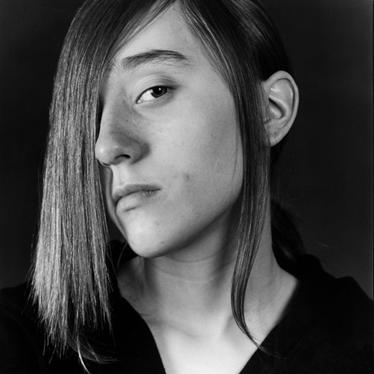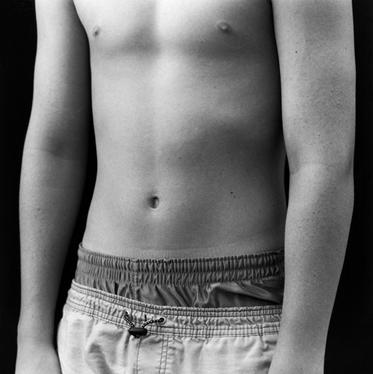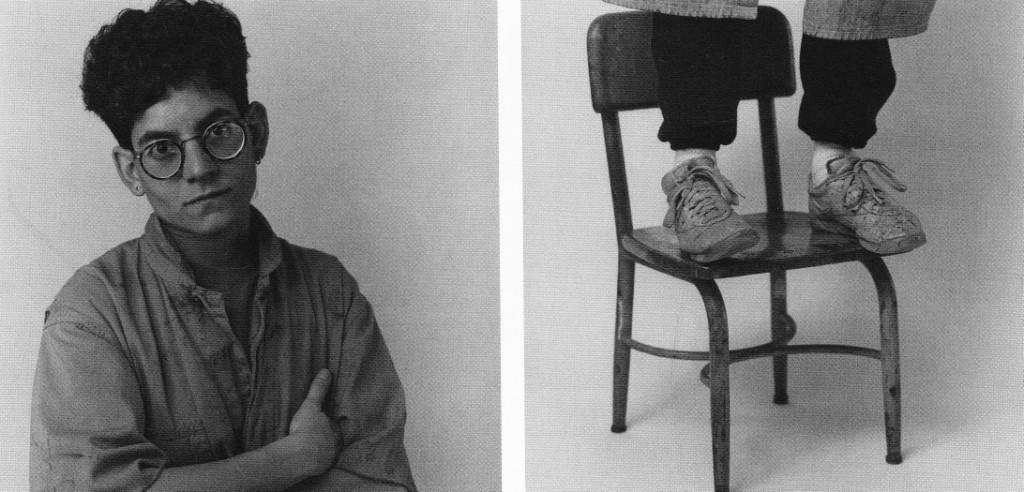Not So Black and White
November 12th, 2010This article originally appeared on November 12, 2010 in The Island. Michele Ellson, editor. Reprinted with an additional image.
Collectors of photography know they want an Ansel Adams, Cartier-Bresson, or an Arbus. They might not know yet that they want a Watten. That’s where B&W: Black & White Magazine for Collectors of Fine Photography comes in. The December 2010 issue includes a six-page spread featuring Alameda photographer Jan Watten, who will be speaking about this piece at Books, Inc. on Saturday, November 13.
Watten and I are friends and colleagues, having exhibited together at three different venues, and I bought one of her photos at Autobody Fine Art’s “Beautiful Dreamers” exhibit earlier this year. We sat down to talk about the article and upcoming event.

"Emelie" (2009)
I invited the editor to Open Studios and he came last December and we had a great conversation. And that was that. And then in late July or early August I got an e-mail from the writer, David Best, a really nice guy. He wrote, “I’ve been assigned to interview you. Are you free this week?” I was actually really shocked.
I’ve been doing photography for a really long time, and sometimes you’re like in this void and you do it and you do it and you work, and you plug away at it and suddenly when something comes of it, it’s exciting. It’s also scary.
Usually Books, Inc. has authors talk about their books. I think it’s unique that they’re inviting someone who was profiled in a magazine to come and speak about that experience. How did that happen?
We love Books, Inc. We like going to the smaller stores, and supporting them, the dying bookstores. I started talking with Jerry (Thompson), who I didn’t know was the event manager or planner, and I asked, “Do you carry Black & White Magazine? I’m in the next issue. I’m just a little thrilled about it.” And he said, “You’re kidding! Oh my God, we’ve got to do something!” His enthusiasm just made me feel great. I was kind of shocked because they just do book events.
Many times I’ve compared you to Sally Mann, not only for your portraits of children but your landscapes as well. Now you’re working on a new series, “Thirteen.” Were you specifically inspired by Sally Mann’s “At Twelve: Portraits of Young Women”?
To be honest with you, I’m not that familiar with the series. I’ve seen some of the images. This work came from photographing my stepsons over time when they were around 13. It’s not exactly 13. “Thirteen” really means that experience, what happens around that time. The changes. I find it just fascinating. And I’ve been photographing Emilie (Watten’s daughter) since she was young, and her friends. They’re all 12 and 13 so I’ve been starting to photograph them now for this series.
But I respect Sally Mann. I respect her work. And I know that a lot of people have issues with her work. I’m not interested in being voyeuristic. Some of the kids don’t have tops on and things like that. But it’s more about capturing that innocence and their young bodies and that’s what I’m more interested in. And the voyeuristic aspect is not what it’s about. It really isn’t.
You’re fond of the plastic “toy” cameras. Was most of your work shot with a Holga?

"Torso" (2005)
No, all of my photos in the magazine were photographed with a Hasselblad. Sharpness is key. I’m really interested in capturing the really sharp detail. Like in the one of the boy with the pants [“Torso” (2005)], you’re able to see every little thread in the boxers. Where everything falls and what’s showing is so important. He pulls his pants down a little bit and I love the fact that you can see the indentation on his stomach. And you would never get that in a Holga. So for this “Thirteen” series I photographed them all with my Hasselblad.
I use my plastic camera and I love my plastic camera, but even though I use this alternative kind of camera, I am a formalist. I use black-and-white film, I print in the darkroom, I like my prints a certain way, and it’s how I see. I’m not really into digital manipulation or scratching on negatives or all the various things. And those are all fine things but I guess I’m just pure in the way I photograph, and that’s the way it is.
You’re also a formalist in that, as you said in the article, you don’t want to provide the narratives behind the photos. You want the art to be completely contained in the work. Are you ever tempted to break your own rule when there’s a particularly interesting story?
I am tempted when there’s a really interesting story. In my “Aspects of Identity” diptychs, many of them have really interesting stories. I’ve really gone back and forth between, do I write a little narrative, or have the person write a narrative, or do I just let the viewer interpret it? And I think that the interesting part is letting the viewer look at it and say, “Gee, it looks like that guy is holding Edvard Munch’s ‘The Scream.’” But there are some really cool stories behind the rat, or the skull, or the paintbrush, or the chair. I don’t mind sharing them, but I think when people are viewing them, let them look at it and decide.

"Carol II" (1991)
You mentioned working with the Hasselblad versus working with the Holga. Lately you’ve been shooting a lot with your iPhone.
(Laughs) Yes.
I teased you once about “phoning in your work” for a show. Is it just fun, or do you see a role for mobile phone cameras in Fine Art photography?
I see a role in using a mobile phone for art. There are a lot of people doing “iPhoneography.” I think it’s a completely interesting medium. It’s very immediate, and I’ve been in a couple of shows where I literally, from my phone, sent (the image) to the show. I compose, I take a lot of time, but it’s very playful. And it’s where I can play with color. I find it really creative. I like the very low-techness of it.
The low-techness of the iPhone?
(Laughs) The low-techness of the very sophisticated iPhone. It’s kind of ironic. But it’s lo-fi photography.
With the range of equipment you use, what do you feel is your relationship to your equipment, and the relationship between the equipment and your Art? As an artist with a vision, how do you find yourself using all these different technologies?
With the Hasselblad it’s very controlled. Typically I shoot in my studio, and I have strobes, and it’s very professional, and so I have a lot of control over it. And I like shooting with that camera. It gives really great results. I capture things in great detail, and I enjoy that process.
When I’m shooting with my Holga it’s a very, very different way of shooting. I almost equate it to Zen photography, because you don’t know what you’re going to get until you get your film back from the developer. I love the fact that it’s chance. When I’m out shooting nature, it almost becomes a sort of meditative thing for me.
The iPhone photography is just pure fun. Recently I downloaded all of my images and it was like 2,000 images. And some of it is nothing I would do anything with, but some of the images are really quite interesting.
So they are three different ways of shooting, and three different ways of responding to photography. And each one I enjoy in a different way.
Books, Inc. is located at 1344 Park Street. The event begins at 7 p.m. on Saturday, November 13. Jan Watten’s website is http://www.JanWatten.com.
Michael Singman-Aste
Postdiluvian Photo
Tags: Alameda, Jan Watten, Jingletown, The Island



Leave a Reply
You must be logged in to post a comment.